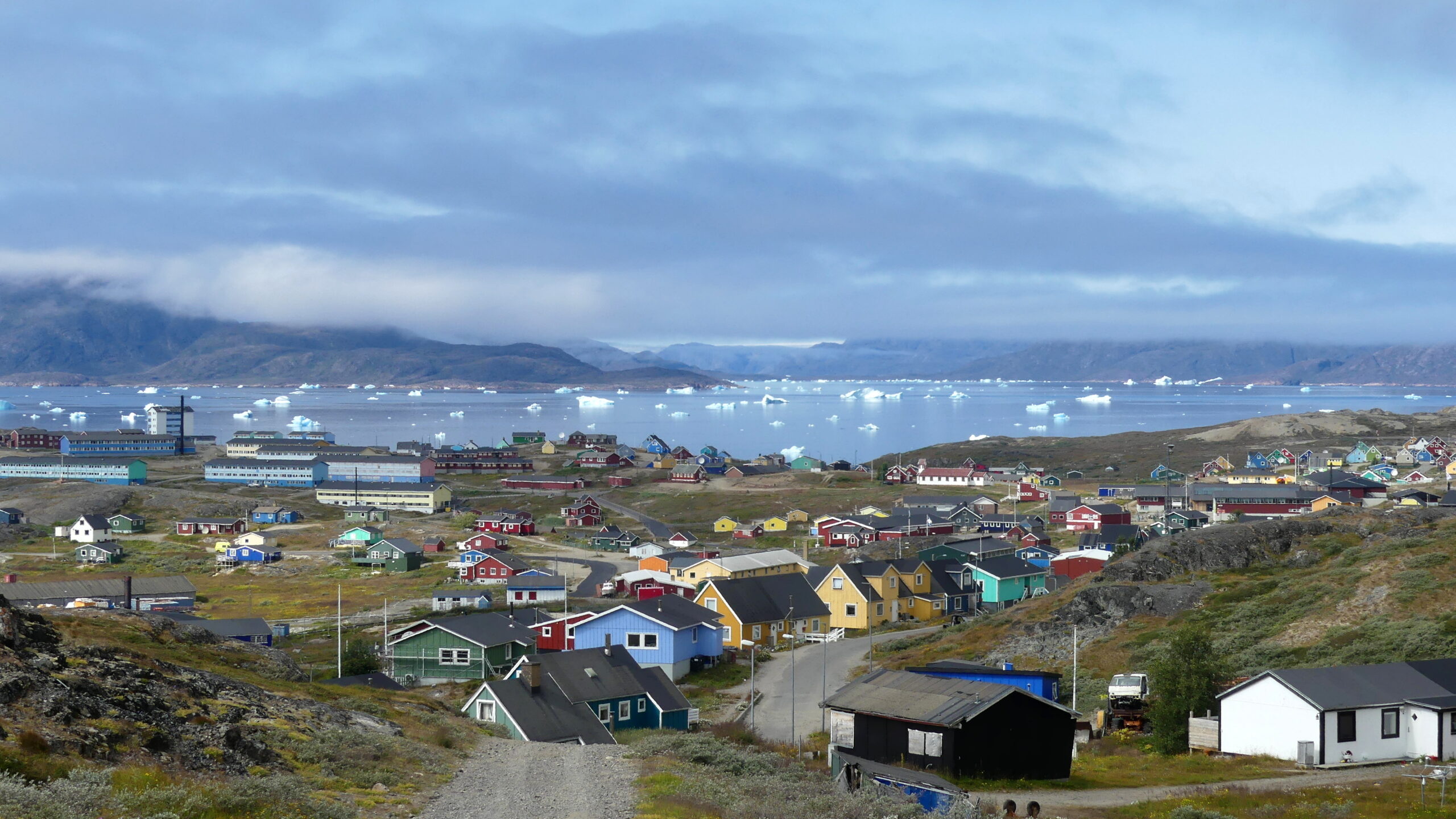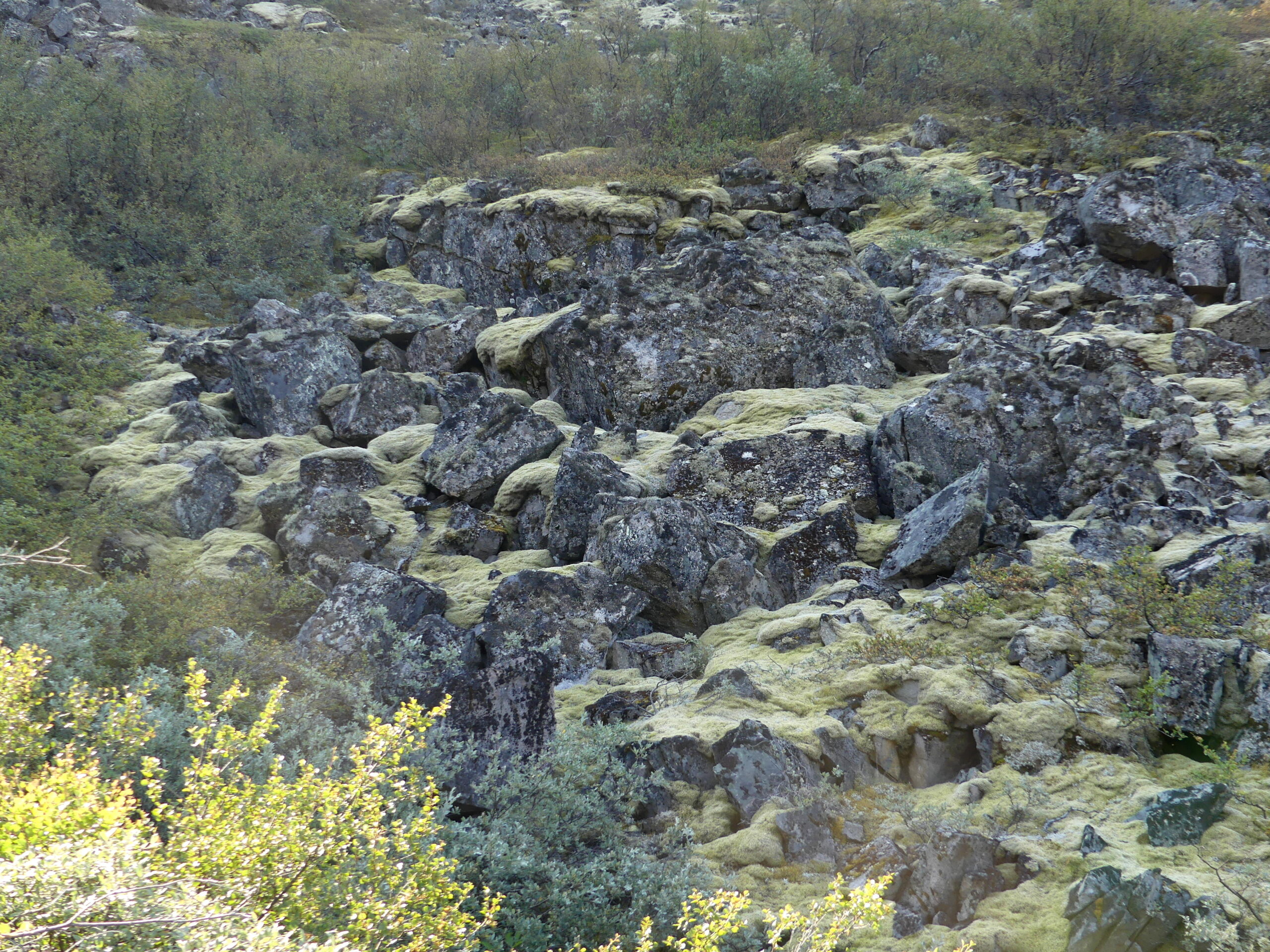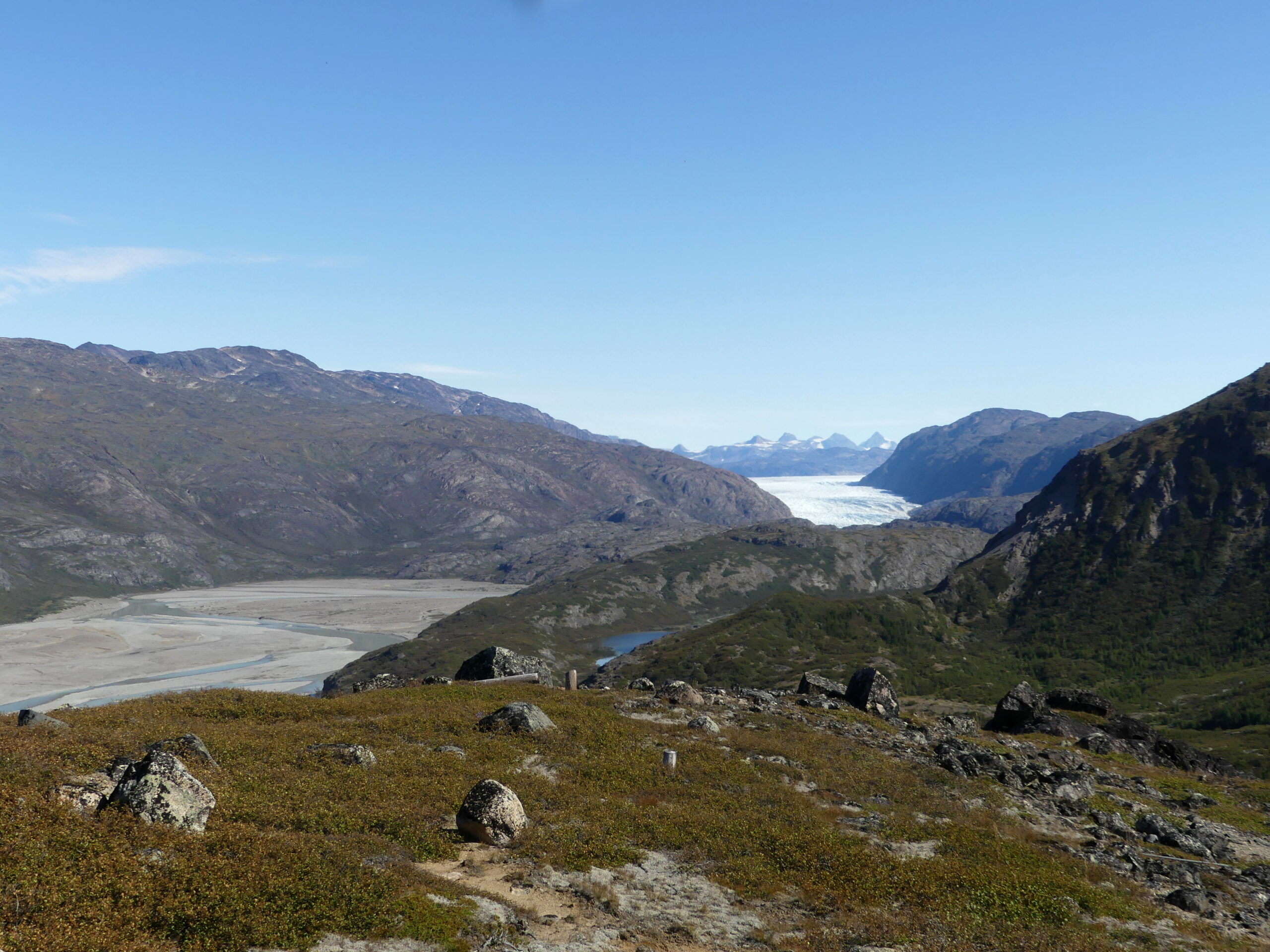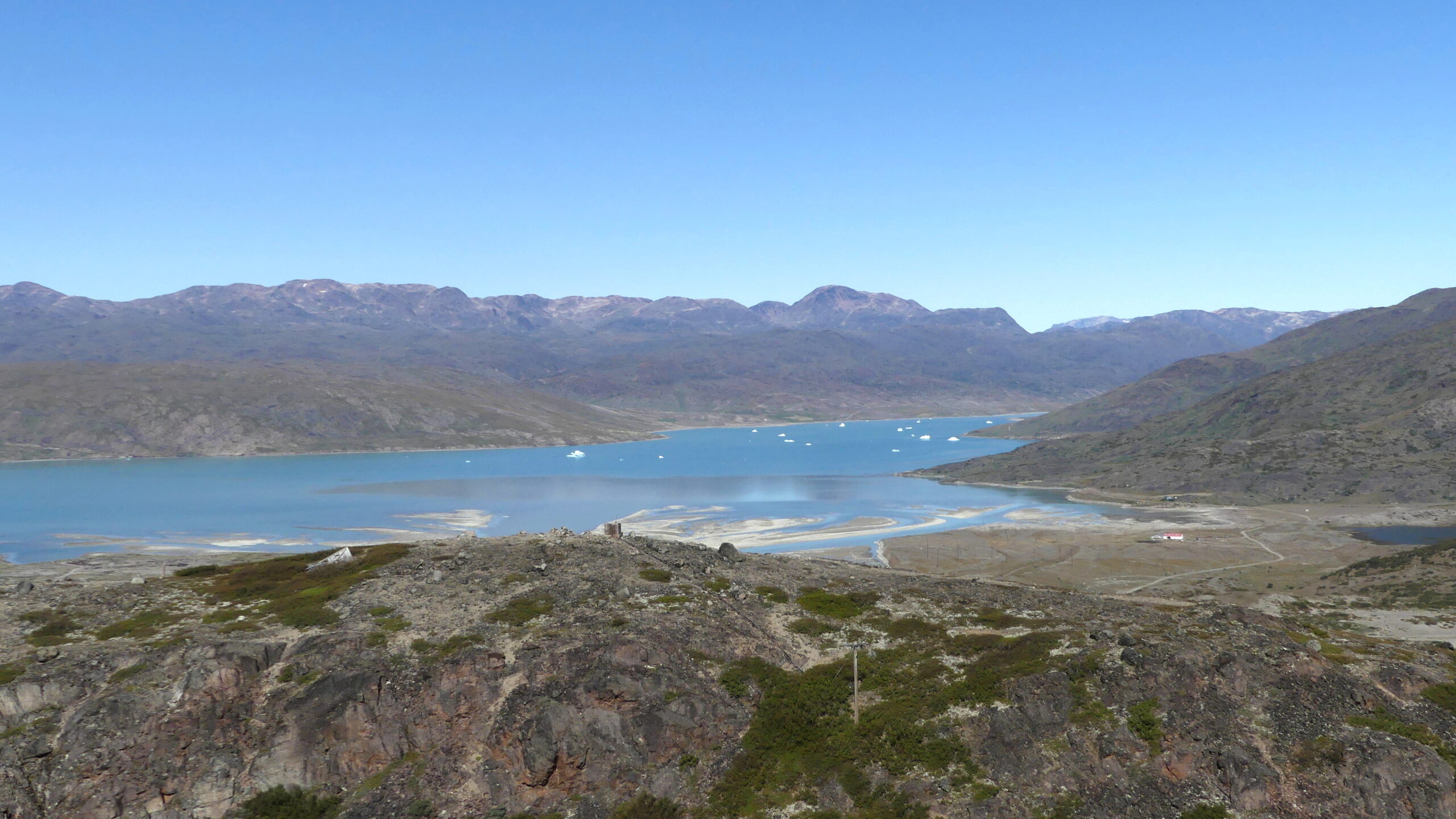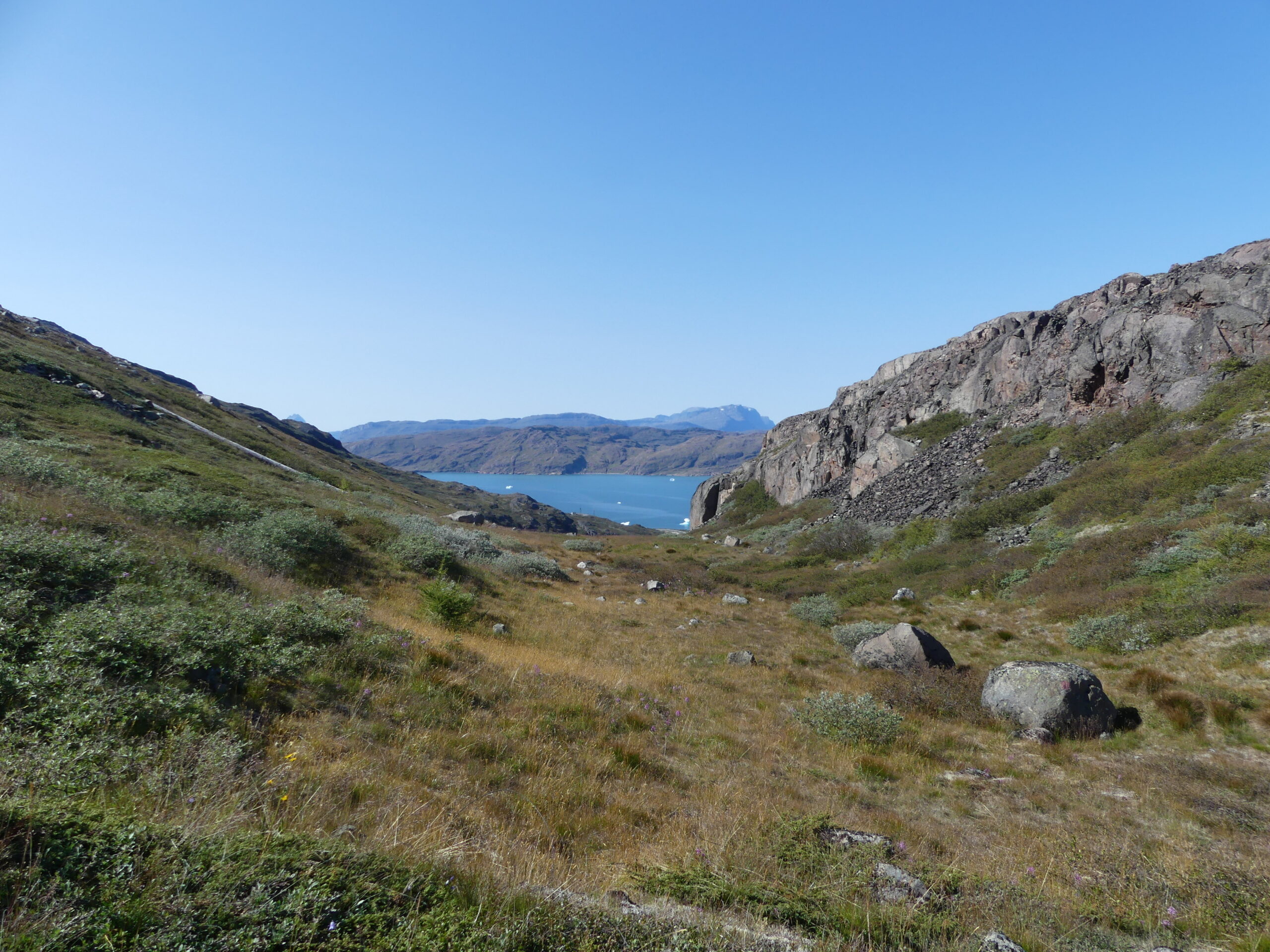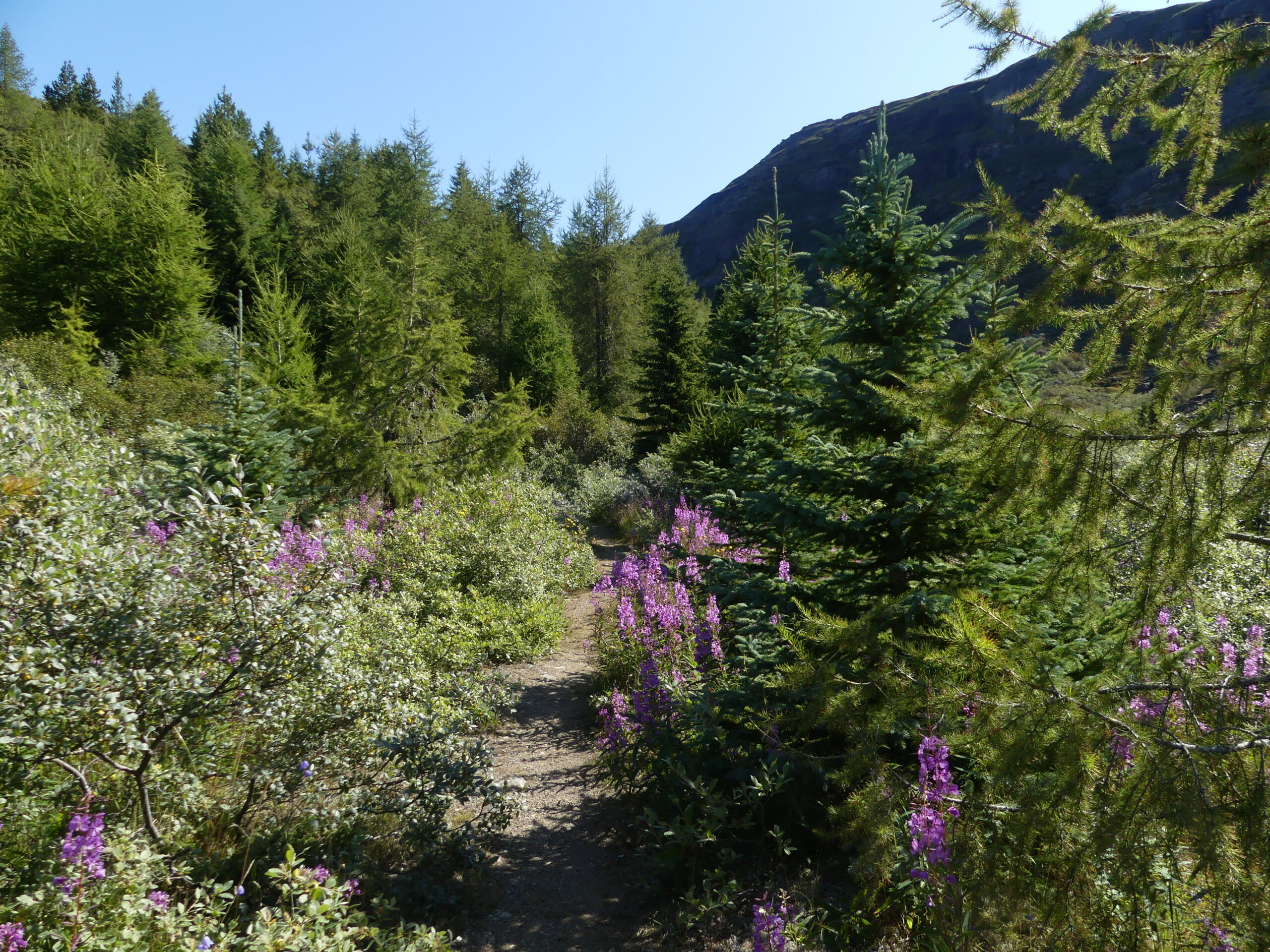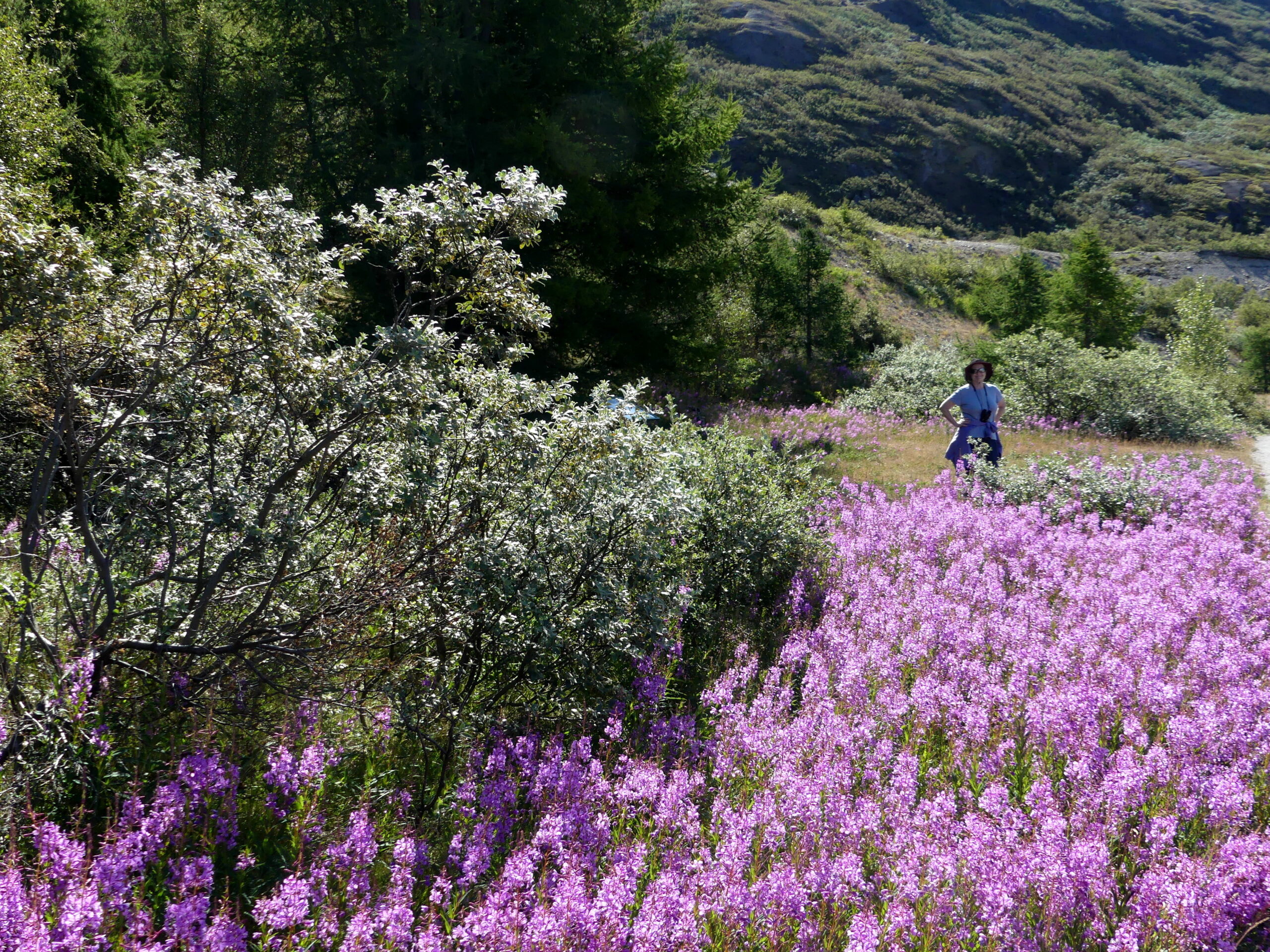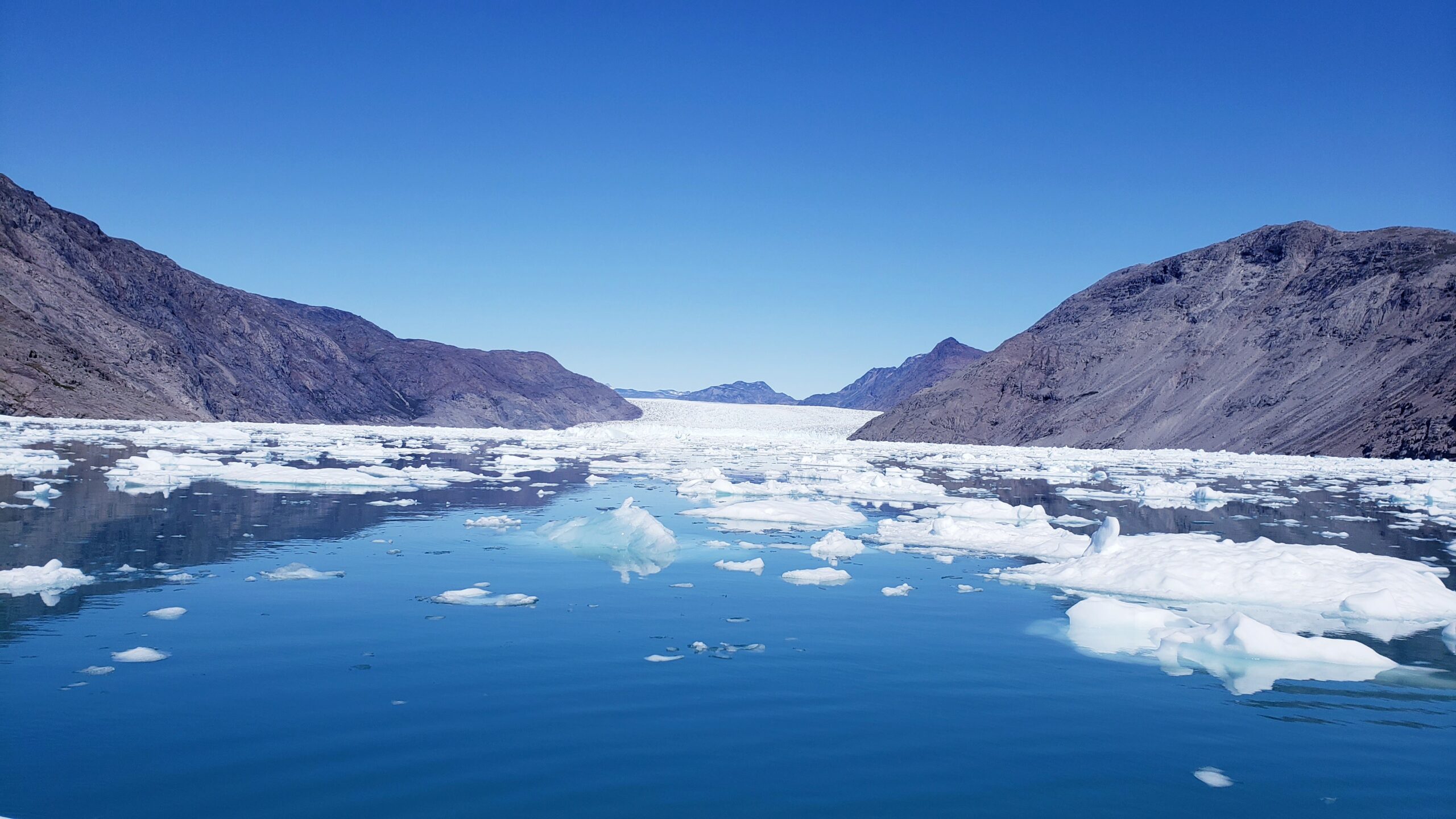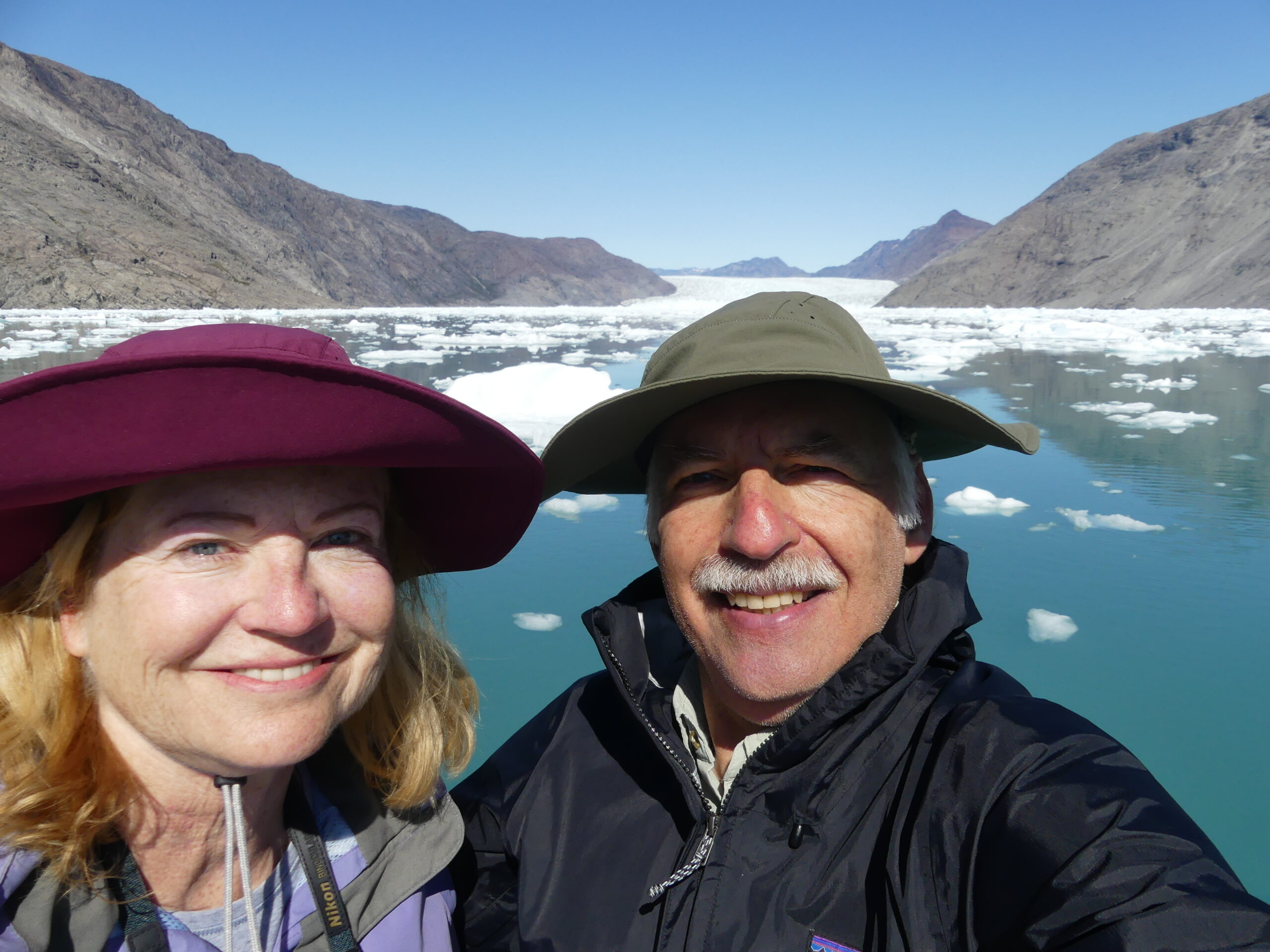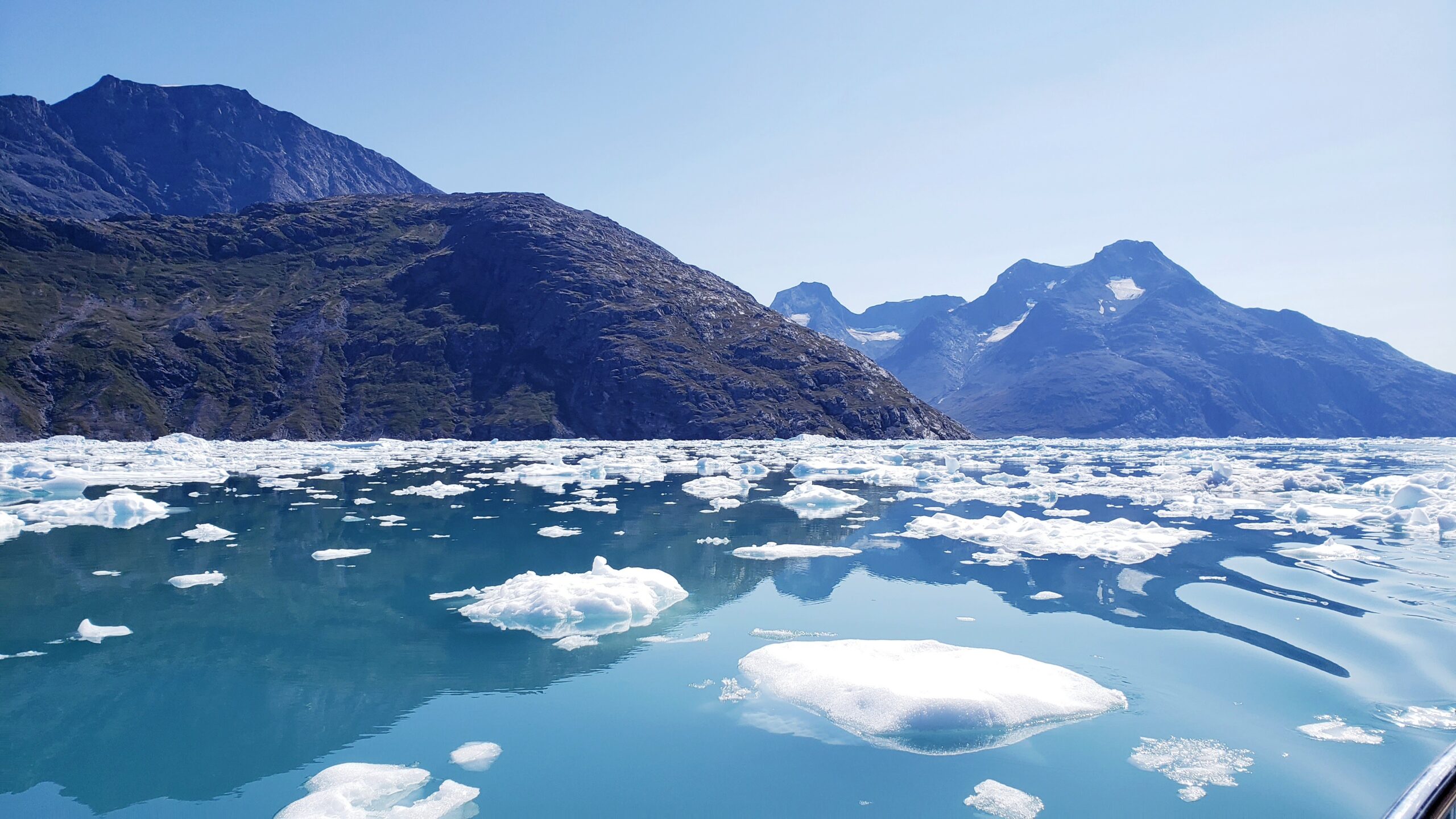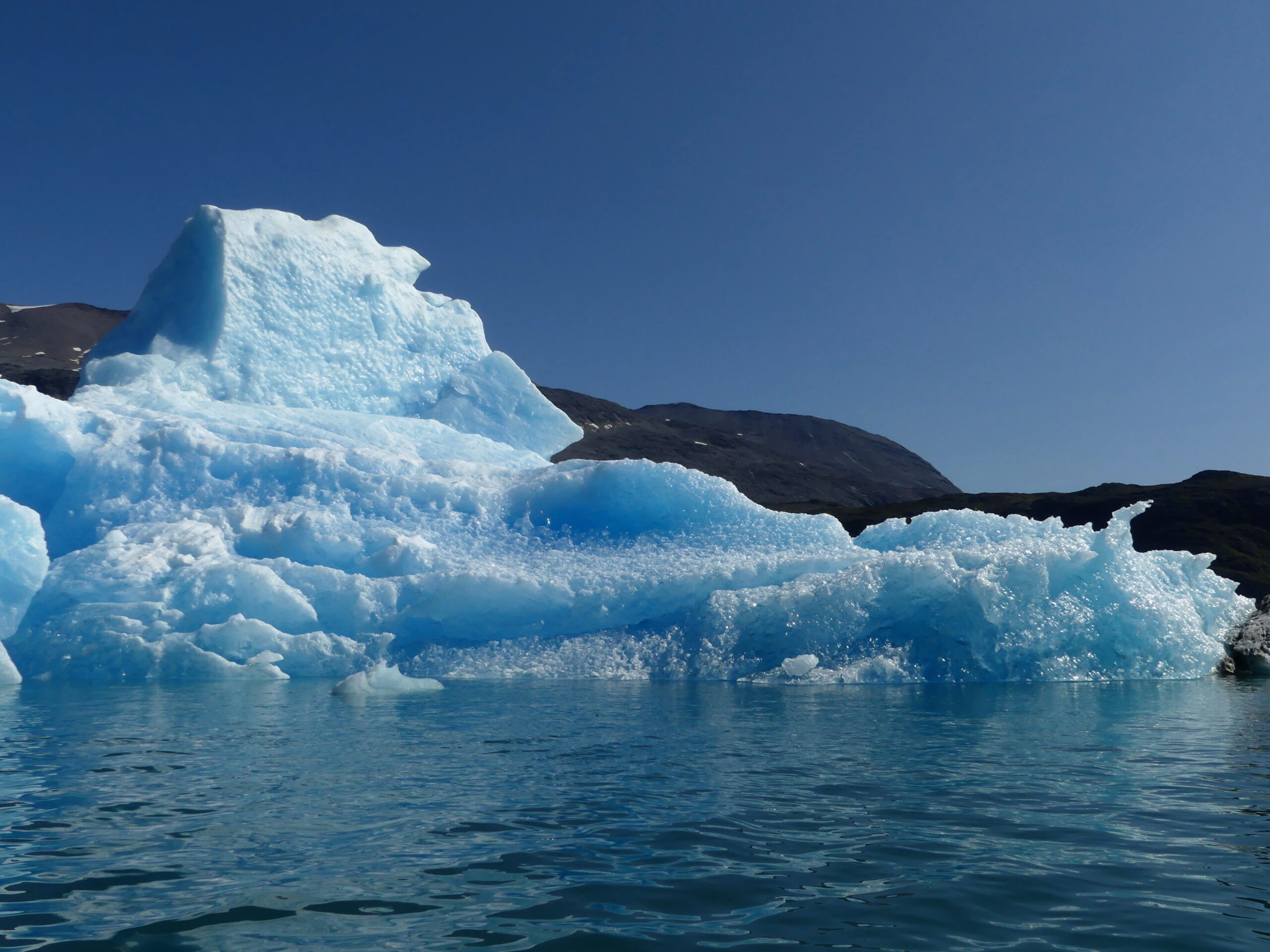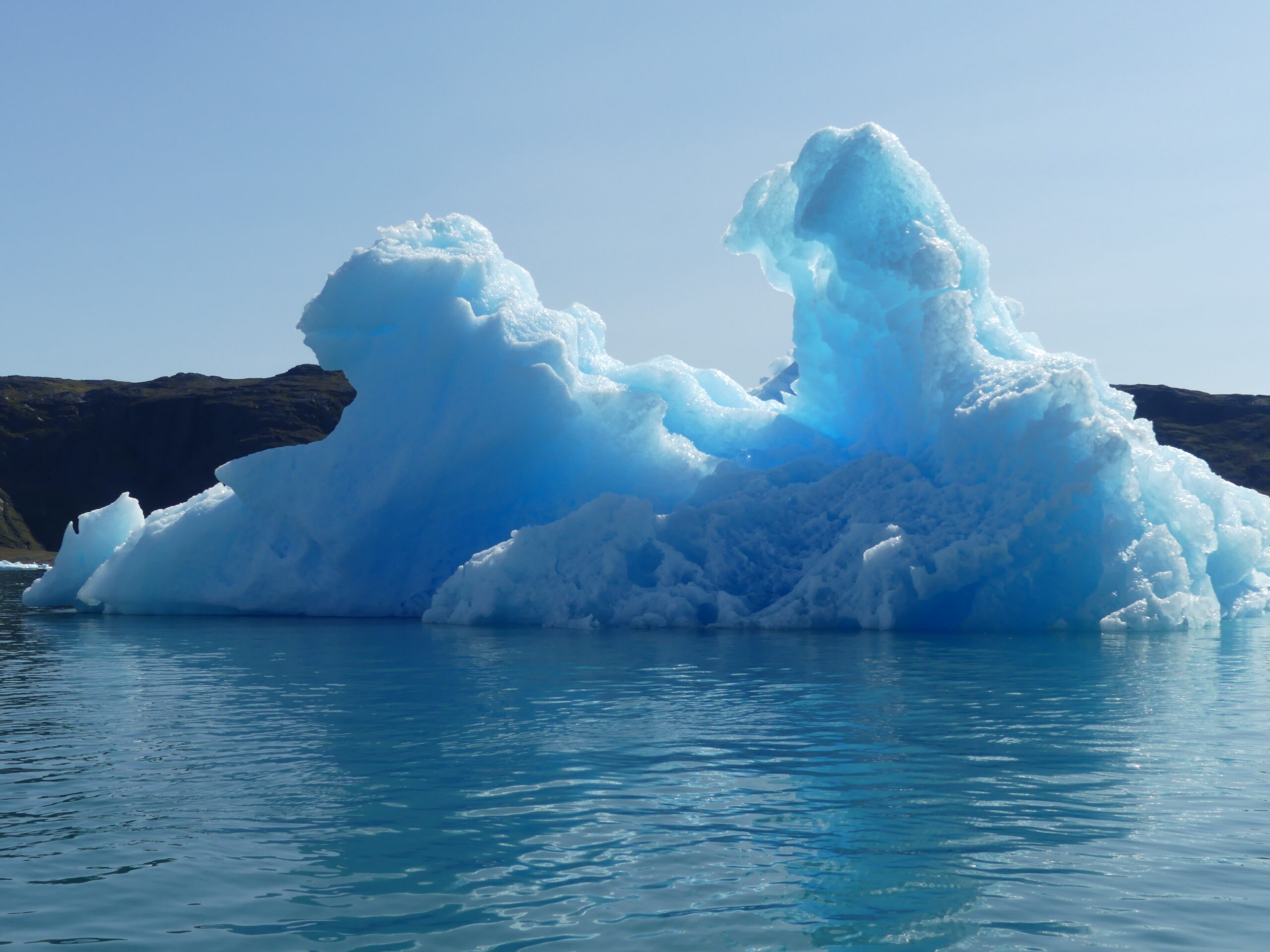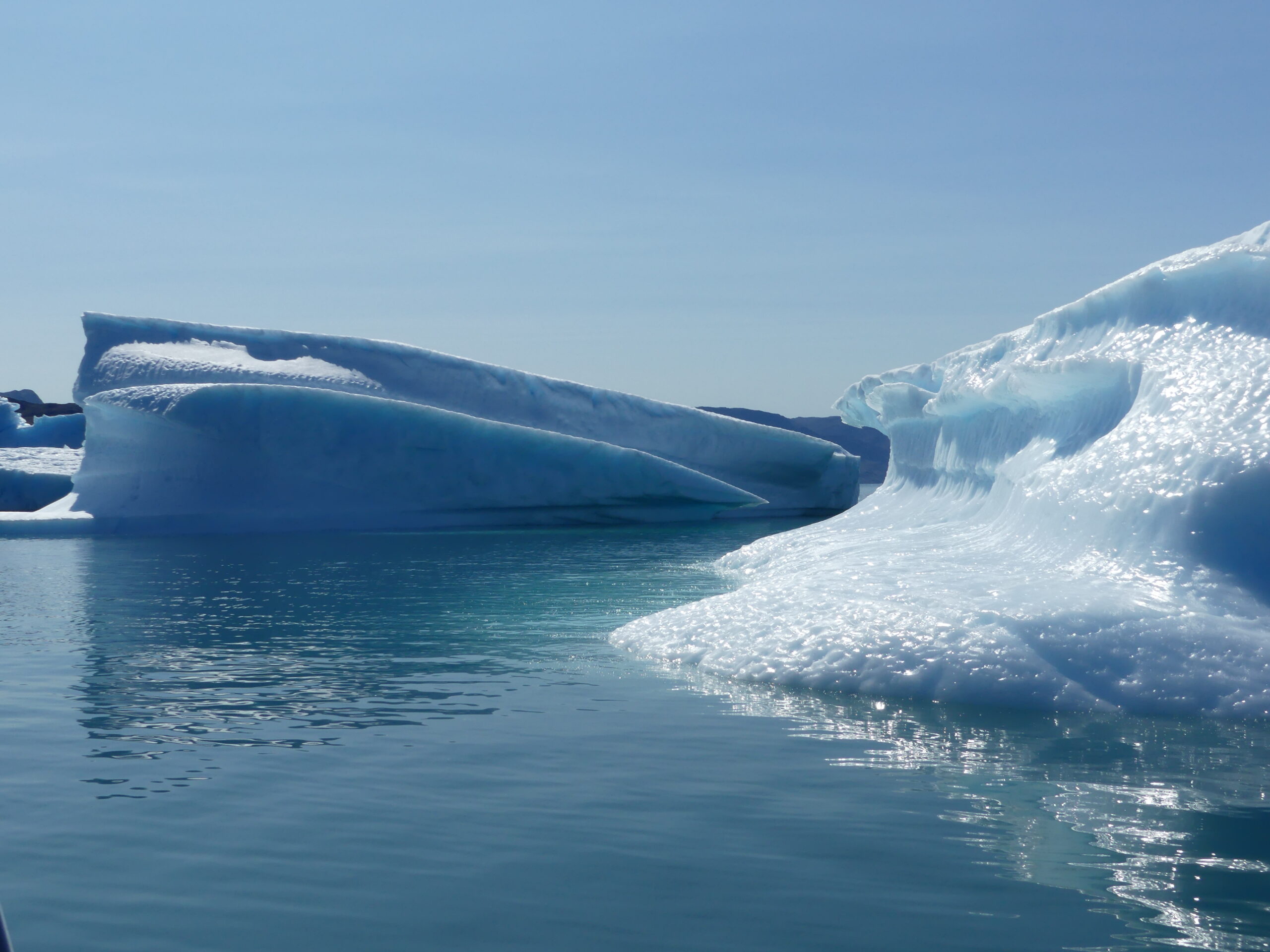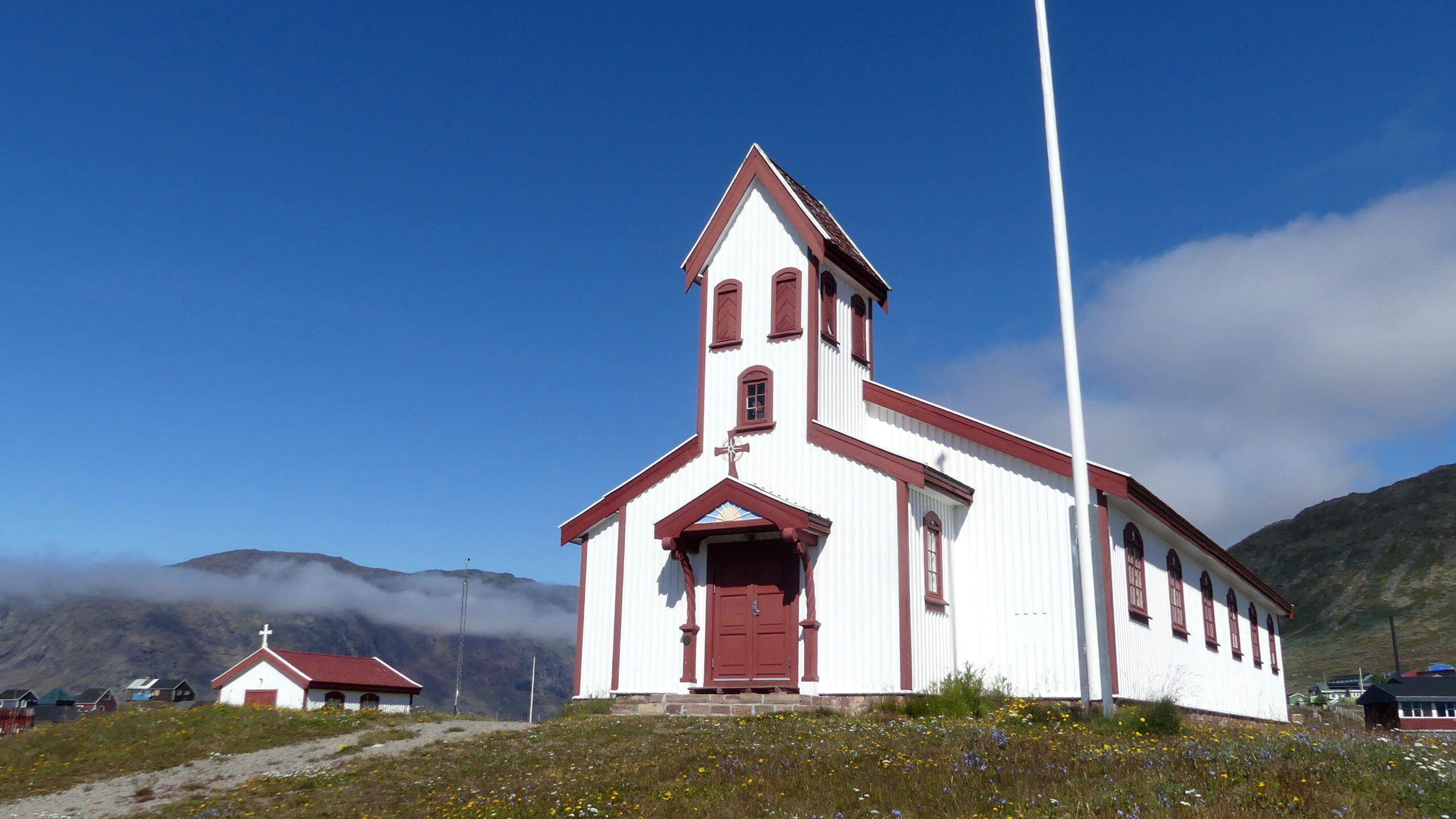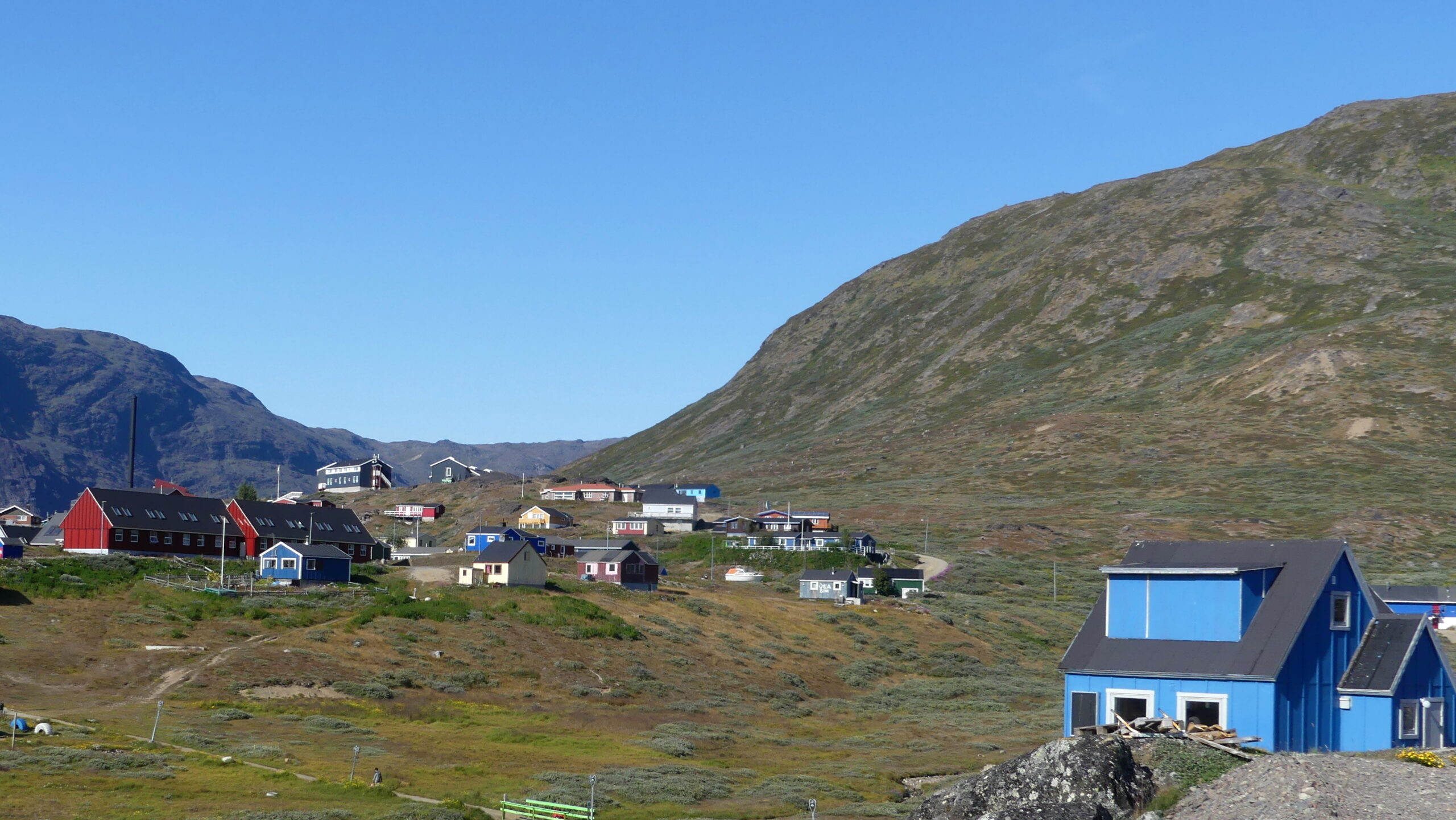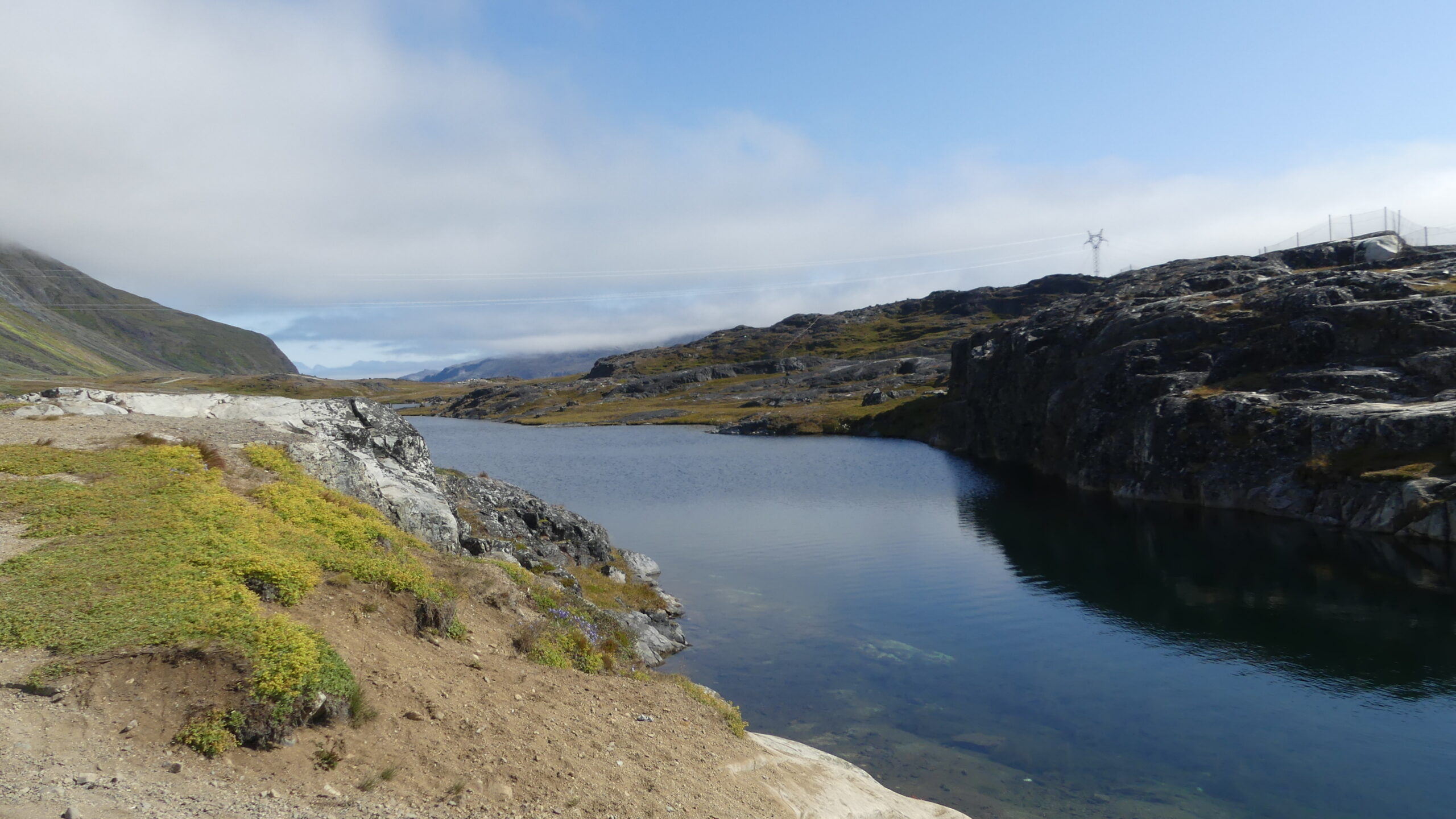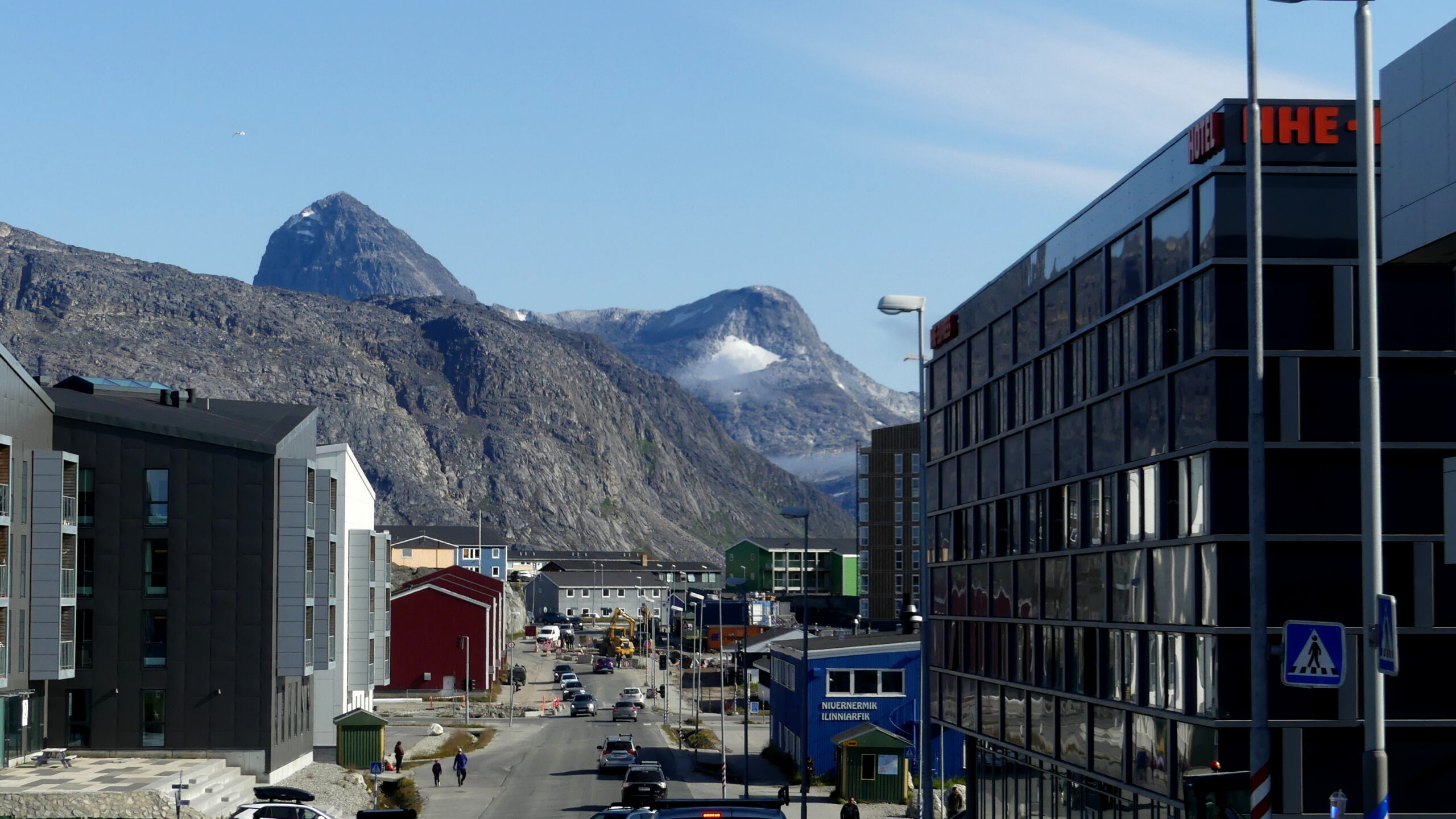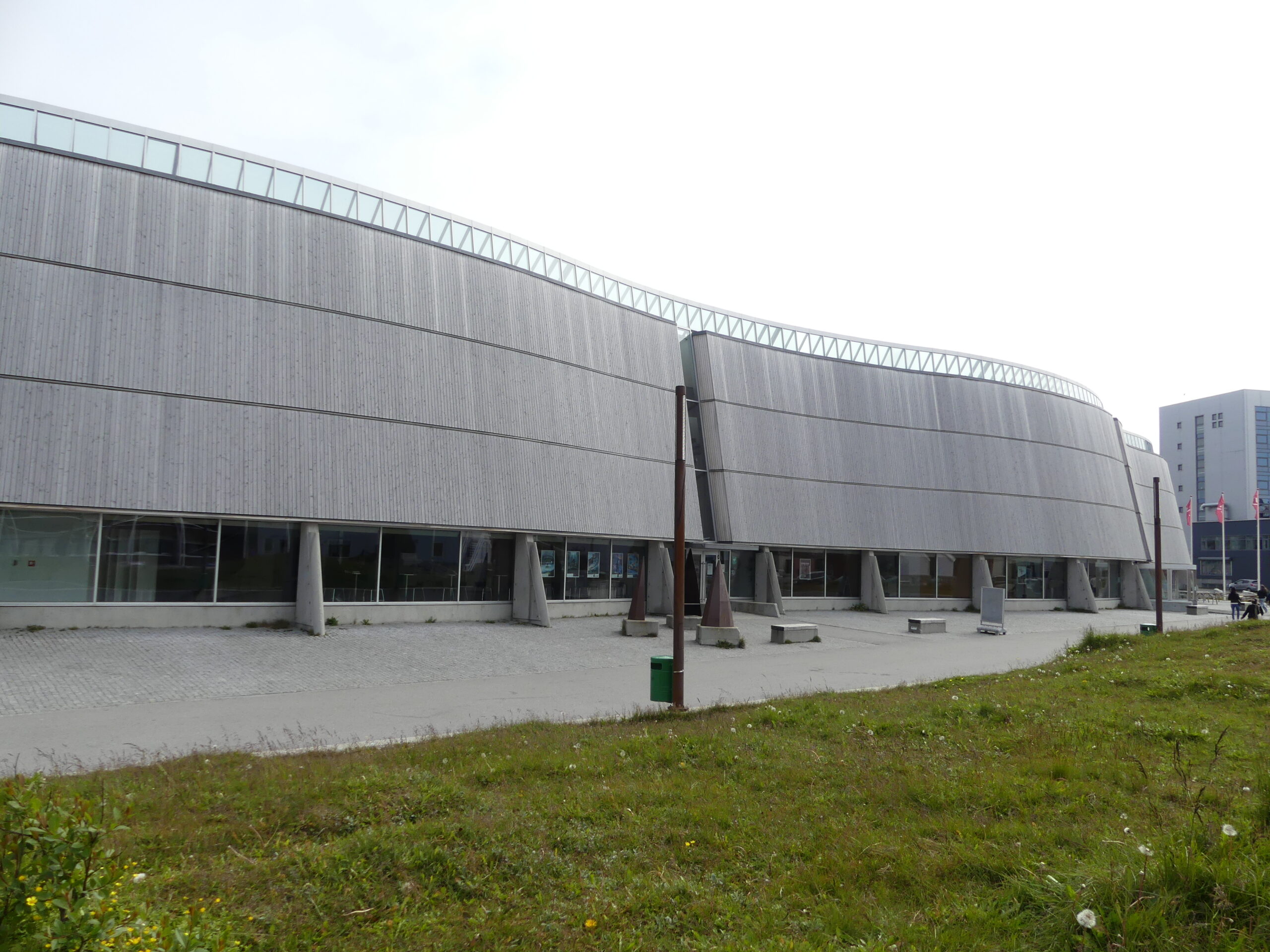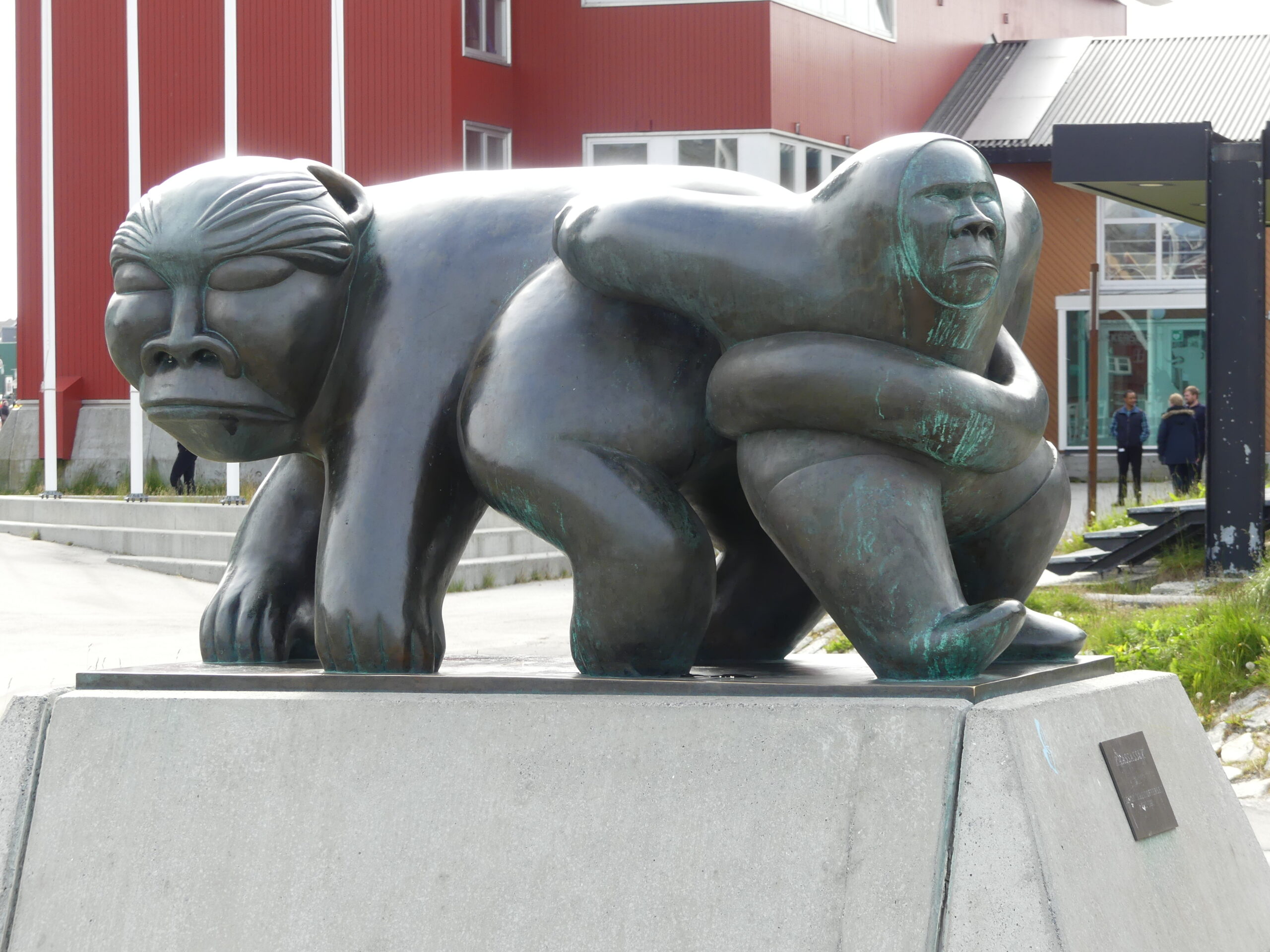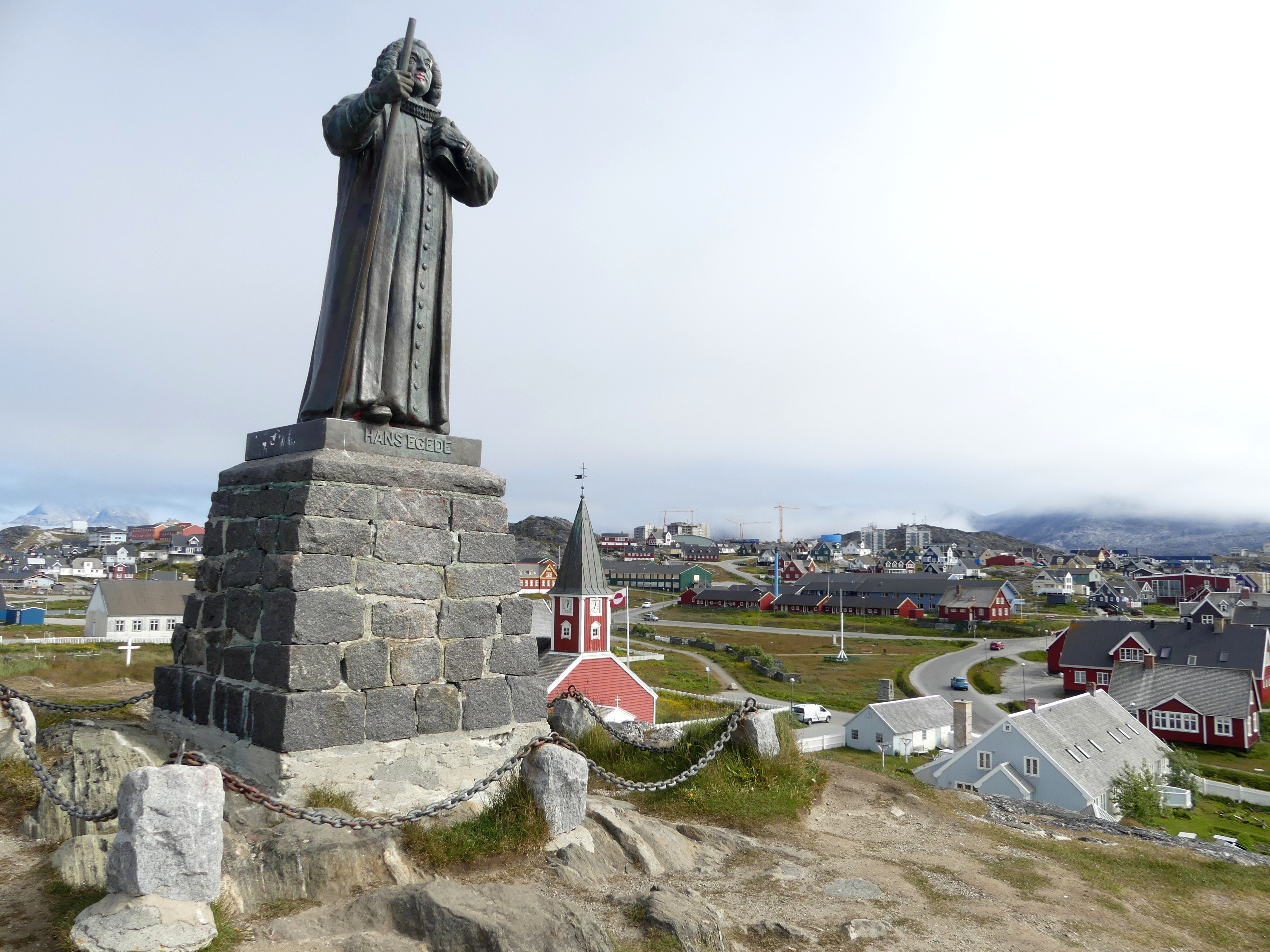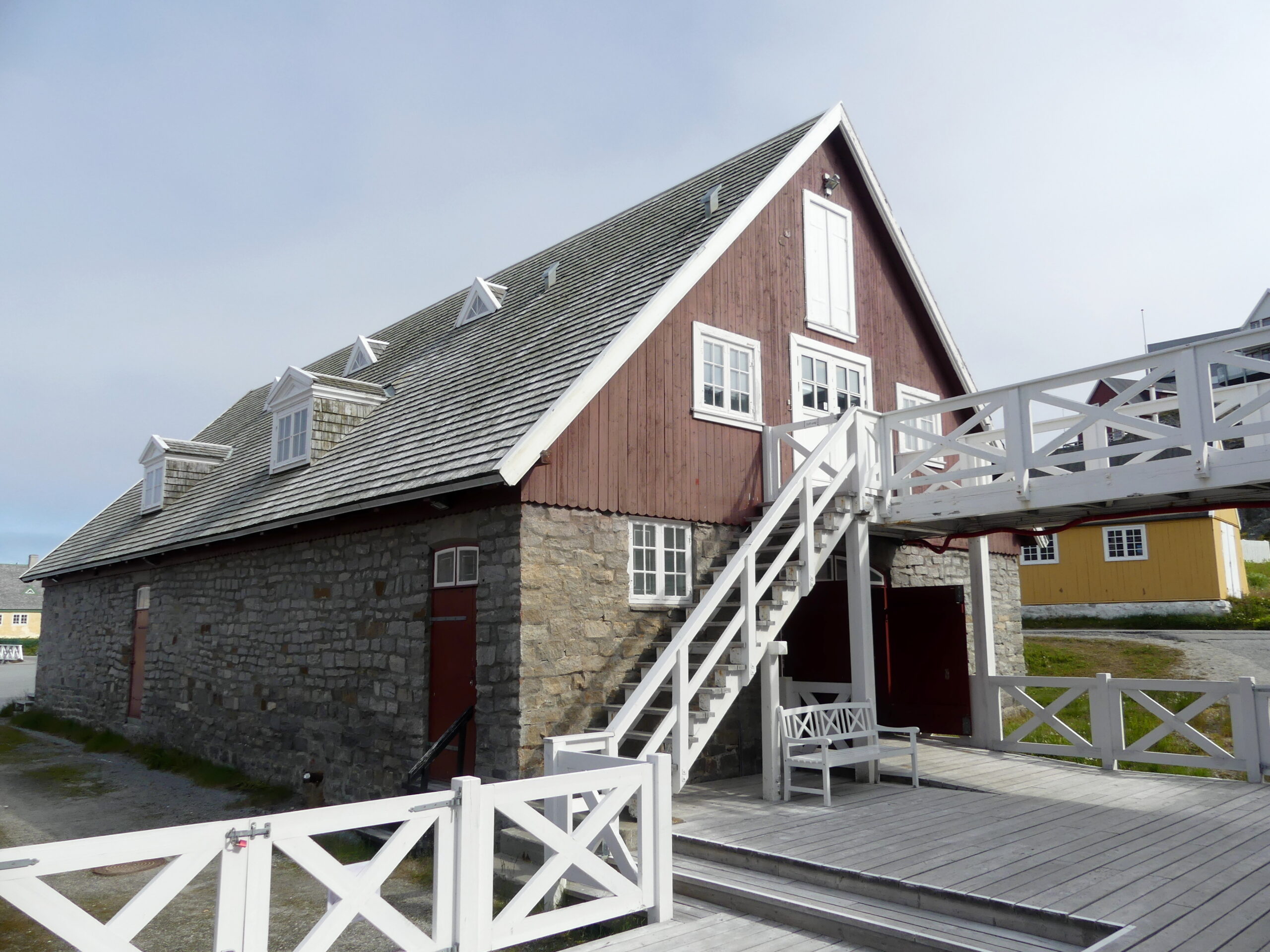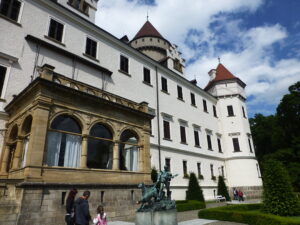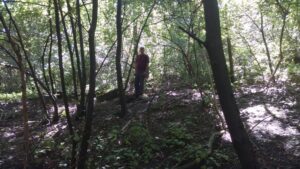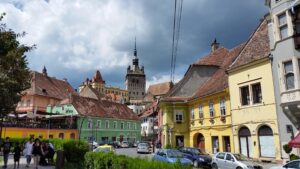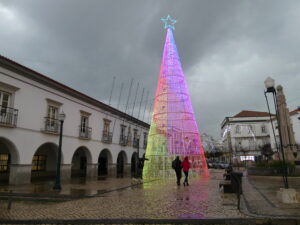Greenland is supposed to be the snowy icy sister to Iceland. Its ice sheet covers 80% of its huge land surface! And only 50,000 people reside along thousands of kilometers of coastline.
For sure, each town – happily bathed in northern sunlight during most of our trip – revealed plenty of ice dotting the waters, afloat or moored after calving from flowing glaciers. But, in the summer, the countryside around the towns also offered us much green land to savor and to hike.
Narsarsuaq
Narsarsuaq was our first stop in Greenland. It is often the starting point for visitors to the western coast for two reasons. Its airport has a long runway used for military purposes starting in World War 2. Also, it is the access point for a charming icefield as well as the World Heritage sites where the Norse/Viking lived between 1000 and 1400 AD. While in this area, we toured the remains of those old towns of Qassiarsuk and Igaliku , and hiked the lovely terrain around them. (For our post about those ruins and landscape, click here.)
Now Narsarsuaq is a dying town. Generally, the population of the old Inuit villages has been declining as the young people move to the larger cities like Nuuk – or to mainland Denmark – for non-farming employment and education. But the region around Narsarsuaq recently voted to move the airport to a larger town south by a few hundred kilometers – along with the tourist jobs. Nearly half the town had already left by the time we visited.
Given Narsarsuaq’s closeness to the wonderful sites we enjoyed, we couldn’t figure out how this would make for greater opportunity for the people…nor could many of the residents to whom we spoke.
There are a number of hikes in the vicinity of the town, an ideal way to spend a few days here because of the limited interest in the town itself, one of the smaller ones we visited. And then there is the Ooroq Glacier and its icefjord, one of the best examples of fjord features widespread in western Greenland.
- Signal Hill Hike
Odd grey-green moss drapes these rocks on the ascent to Signal Hill.
At the top of our hike, we see the Narsarsuaq glacier descend toward its fjord.
The Narsarsuaq fjord with its iceberg islands, as seen from Signal Hill.
A high valley pass down from Signal Hill toward the Narsarsuaq fjord.
The lush meadow during our challenging descent from Signal Hill.
One reward for our return from the Signal Hill climb: these bright pink wildflowers.
- Ooroq Glacier
The Ooroq Glacier on an adjacent fjord is the largest around here, 1.5 kilometers wide (about a mile) and 70 meters tall (about 250 feet). We are about 6 kilometers from the glacier (over 3.5 miles) but it feels so close.
Enjoying the sunny weather – and a vermouth poured over glacial ice – after a very chilly boat ride to Ooroq.
Mountains along the Ooroq fjord.
Glaciers drop huge plinths of ice into their fjords. As they drift along, the “calves” melt into fantastic shapes. These are “stuck” in place because they have nested on the glacial moraine, an accumulation of rock and earth that makes the fjord shallower at its mouth.
One of the most amazing – and bluest – of the iceberg formations drifting away from the Ooroq Glacier, Narsarsuaq’s neighboring fjord.
More blue ice, transmitting that color of light because it’s more aerated than other formations.
Narsaq
Narsaq is just a short boat ride north of Narsarsuaq, and the most likely beneficiary of the airport change because it would still give access to the historic and adventure sites we visited. It already features a large fish processing plant, plus Narsaq was the starting point for our water journey on the local ferry. (For that story, click here.)
So it’s a fairly large town, as Greenland cities go, with 1500 people and a sprawling mix of colorful, wood-frame houses along the bluffs. With most of the coastline defined by bluffs, this layout of colorful homes scattered about the plateaus and hills is typical of towns in west Greenland.
Mostly we traipsed about the town, learning quite a bit about native culture at the small museum here, but otherwise primarily searching out the town arts center and a café for lunch – a successful search when we located some fine Thai food near the old port. While hunting for an open café, several locals told us to look for the red house, a very vague help because red is the dominant color of local houses.
Atop one of the higher hills within town gleams this typical Norwegian style Lutheran church, with some charming if simple decoration at the front portal.
The day we arrived we also learned about the mineral resources in the backcountry here, including the uranium which drove a lot of activity in the 1950s and 60s but was halted. Now rare earth minerals may start another significant mining era.
We also had time for an afternoon hike along the edge of the dominant mountain peak here past a lake that acts as a reservoir.
Nuuk
Nuuk, the capital of Greenland, is where the Norwegian settlers of the 18th century first returned after four hundred years away. Perched on steep cliffs, it can look like a typical Greenland small town in places. Already with nearly 20,000 people, Nuuk is notable for its large, contemporary buildings along broad roadways and countless cranes constructing new ones. But it also retains much of the Scandinavian charm of the small towns.
Cultural center of Nuuk. This enticing building houses a theatre and arts gallery, as well as a café popular with locals and tourists for the enormous meals it serves. At other tables, we saw an omelet draped over a large serving plate and a sandwich large enough for three people.
The legendary figure of Kaassassuk, apparently in contention with some disgruntled animal – one of the many attractive statues in plazas like this and along the Nuuk streets.
Hans Egede is still honored as the founder of the modern city of Nuuk. An 18th century Lutheran minister, he came here with a number of other religious leaders to re-establish the presence and faith of Norwegian settlers along the Greenland coast after a gap of three hundred years.
Their efforts attracted Norwegian and Danish adventurers who came to harvest the seas and join the ministers in farming crops or sheep. Here his statue stands above his old homestead and church, as well as the port settlement of the old town.
An 18th century house from Egede’s time, now part of the National Museum. We learned so much about the ancient and more recent peoples of Greenland here, through detailed stories and important artifacts.
(To enlarge any picture above, click on it. Also, for more pictures from Greenland, CLICK HERE to view the slideshow at the end of the itinerary page.)


